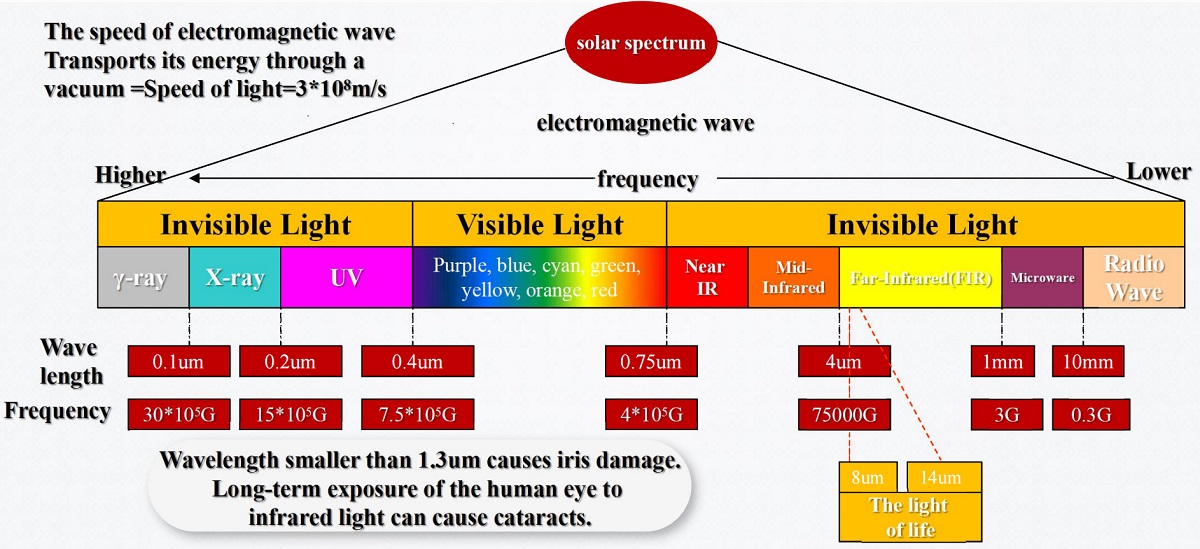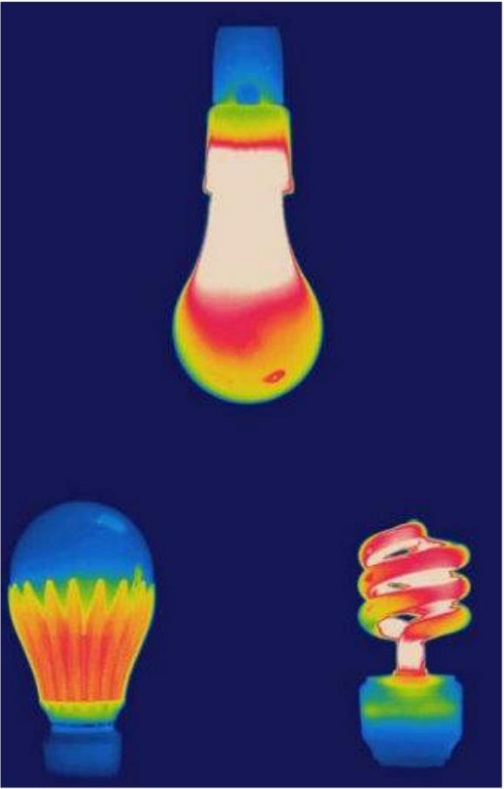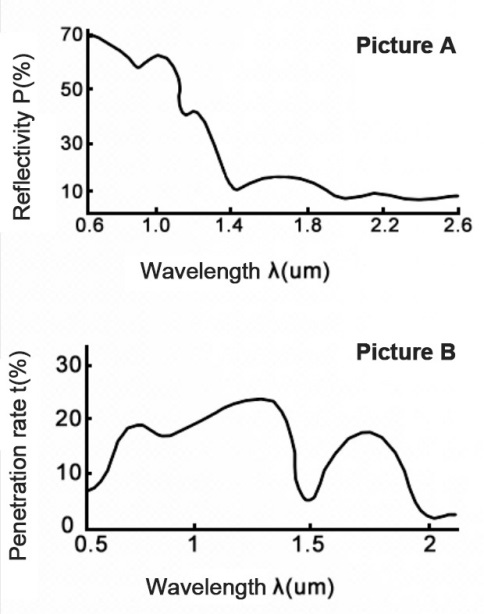Infrared heating technology
1.ElectromagneticSpectrum

2.Introduction to Far Infrared
The sun's rays can be roughly divided into visible light and invisible light.
1)The visible light passes through the prism and reflects the light of purple, blue, cyan, green, yellow, orange and red
colors (spectrum).
2)A section of the wavelength from 0.75 to 1000 um in the spectrum is called infrared.
3)Infrared belongs to the category of electromagnetic wave, is a kind of electromagnetic wave with strong heat.
4)Infrared has a wide wavelength range. People divide infrared rays in different wavelength ranges into near-infrared
regions, mid-infrared regions and far-infrared regions. The corresponding wavelengths of electromagnetic waves are
called near-infrared ray, mid-infrared ray and far-infrared ray.
5)Infrared is a kind of light wave whose wavelength is shorter than radio waves and longer than visible light.
6)Infrared rays can not be seen by human eyes, and any object emits infrared rays.
7)Infrared radiation of hot objects is stronger than cold objects.
3.Principle of Thermal Radiation
1)Experimental results show that an object radiates electromagnetic waves into the surrounding
space at any temperature;
2)The amount of energy that an object radiates electromagnetic waves to and from within a
certain period of time and the distribution of energy by wavelength (or frequency) is related to
the temperature of the object;
3)At room temperature, the radiant energy emitted by most objects is distributed in the infrared
part of the electromagnetic spectrum. As the temperature increases, the radiant energy
increases;
4)The distribution of radiant energy gradually moves toward a high frequency, that is, the
higher the temperature, the more high-frequency electromagnetic wave components in the
radiant energy;
5)Every object in nature is an infrared radiation source. The temperature of the object is
different, and the infrared wavelength of the radiation is different;
6)The higher the temperature, the shorter the wavelength and the more infrared rays are
generated.

4.Far Infrared Features
1)Emissivity: Because far infrared belongs to the electromagnetic wave of the light range, it can conduct
directly without any media just like the light, which is the emissivity of far infrared;
2)Permeability (seepage force): Although far infrared belongs to the electromagnetic wave of light, it is
different from other visible light in permeation. Far infrared has an unique penetrating power, and its
energy can be applied to the subcutaneous tissue at a certain depth, and then through blood circulation,
the energy can reach the deep tissue and organs. This is the permeability of the far infrared;
3)Absorptivity & Resonance: Kirchhoff’s law of thermal radiation states that a good absorber is a good
emitter. At the same temperature, the greater the radiation power, the stronger the absorption power,
and the two are proportional to each other. For an arbitrary body who containing far infrared radiation
can emitting and absorbing thermal radiation, the emissivity is equal to the absorptivity. The human
body also emits far infrared rays every moment, and it is determined that the far-red line wavelength
emitted by the human body is about 9.6um
5.Far Infrared Features
1) In figure A, it can be seen that the wavelength which is larger
than 2um band, the reflectivity of human skin is less than 10%,
and the transmittance is also the least. The wavelength of far
infrared is 4um-1mm, obviously the far infrared region is
basically absorbed by human skin;
2)The far-infrared wavelength of the surface of the human body is
in the range of 2.5 to 25 μm, and the peak value is 9.35 to 9.50 μm;
3)Among them, the radiation in the 8~15μm [The light of life] band
accounts for about 46% of the total radiant energy emitted by the
human body;
4)Because far-infrared rays have strong penetrating power and
radiation, and have a warming effect and a resonance effect on
the human body. Hence, when infrared radiation is strong, the
local temperature of the irradiated body can be raised by
exceeding the heat-dissipating ability of the living body, resulting
in warmth. So far infrared heat energy can be transmitted to the
deep part of the human subcutaneous tissue.
